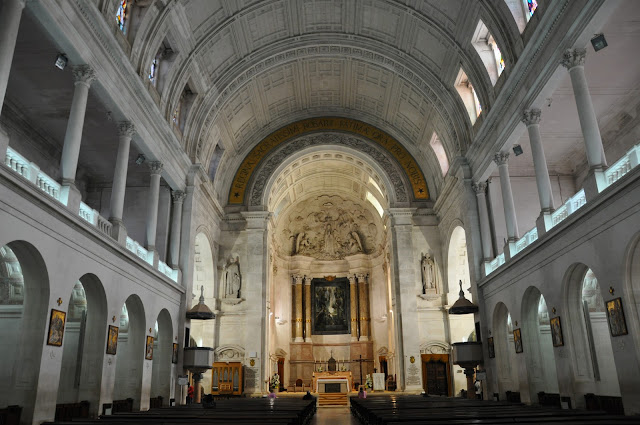We explored inside the castle walls of Ourem after breakfast yesterday morning, then we drove to Fatima, to see the famous sanctuary. The history of Fátima is associated with three children: Lúcia and her
cousins, Francisco and Jacinta Marto who, on 13 May 1917, while guarding
their sheep nearby, witnessed an apparition of a lady dressed in white. The lady, indicated that she was sent by God with a message of prayer, repentance
and consecrations. She visited the children each month on the 13th from
May 13 - October 13. The last apparition occurred on October 13th, and
was witnessed by 70,000 pilgrims, who saw the Miracle of the Sun. The city of Fatima has about 11,000 residents, but a couple of times
during the year, they welcome 1 million visitors/pilgrims.
Our next stop was at Batalha, founded by King Joao I of Portugal, jointly with the Monastery of Santa Maria da Vitoria, to commemorate the victory of the Portuguese over the Castilians in the Battle of Aljubarrota in 1385. The Monastery is a UNESCO World Heritage Site (http://whc.unesco.org/en/list/264). We visited Batalha in early 1994 and remembered it as soon as we arrived. It is a stunning feat of architecture from so many hundreds of years ago!
Our next stop was at the town of Nazare, founded as a fishing village. It's setting on the Atlantic is dramatic. It was a beautiful day and the ocean and sea breeze are hard to beat!
We made one last stop of the day, in Alcobaca, to visit the Monastery of Santa Maria, founded in the 12th century by King Alfonso I. It is considered a masterpiece of Cistercian Gothic art. It is also a UNESCO World Heritage site, http://whc.unesco.org/en/list/505. It is amazing to think of a cathedral of this magnitude built in the 1100's. My hat is off to the architects, as Alcobaca is incredibly beautiful, as is Batalha, Tomar, and many others, and they are still standing and in good condition!
We drove south to the Alentejo region, watching the terrain change from hills with small farms, vineyards and orchards, to flatter terrain with large olive groves, cork trees, and miles of wheat. We stayed in Beja overnight in a Pousada that was formerly a convent, built in the 13th century.


















